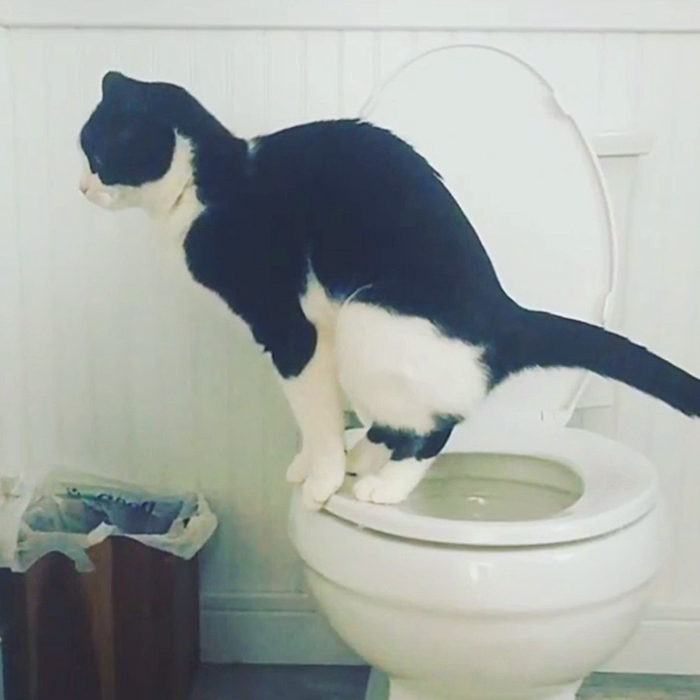Avoid Plumbing Problems: Never Flush Cat Poop Down Your Toilet - Expert Advice
Avoid Plumbing Problems: Never Flush Cat Poop Down Your Toilet - Expert Advice
Blog Article
The writer is making a few good observations on Can You Flush Cat Poo or Litter Down the Toilet? as a whole in this great article down the page.

Introduction
As feline proprietors, it's important to be mindful of how we take care of our feline good friends' waste. While it may appear practical to flush pet cat poop down the toilet, this technique can have harmful consequences for both the atmosphere and human health.
Environmental Impact
Purging feline poop presents hazardous virus and parasites into the water, positioning a substantial risk to water ecological communities. These contaminants can negatively affect aquatic life and concession water quality.
Health and wellness Risks
Along with ecological problems, purging cat waste can also position health and wellness dangers to people. Feline feces might consist of Toxoplasma gondii, a parasite that can cause toxoplasmosis-- a potentially severe disease, particularly for pregnant women and individuals with weakened body immune systems.
Alternatives to Flushing
The good news is, there are safer and more liable methods to deal with pet cat poop. Consider the adhering to options:
1. Scoop and Dispose in Trash
The most usual technique of dealing with pet cat poop is to scoop it into a biodegradable bag and toss it in the trash. Make certain to use a committed litter inside story and deal with the waste immediately.
2. Use Biodegradable Litter
Choose naturally degradable feline litter made from materials such as corn or wheat. These trashes are eco-friendly and can be securely dealt with in the garbage.
3. Hide in the Yard
If you have a backyard, take into consideration hiding pet cat waste in an assigned area far from veggie yards and water sources. Make certain to dig deep sufficient to avoid contamination of groundwater.
4. Install a Pet Waste Disposal System
Buy a pet dog waste disposal system specifically designed for cat waste. These systems use enzymes to break down the waste, lowering smell and environmental influence.
Conclusion
Responsible pet possession expands past giving food and sanctuary-- it also entails correct waste monitoring. By refraining from flushing pet cat poop down the commode and selecting alternate disposal methods, we can decrease our ecological footprint and shield human health and wellness.
Why Can’t I Flush Cat Poop?
It Spreads a Parasite
Cats are frequently infected with a parasite called toxoplasma gondii. The parasite causes an infection called toxoplasmosis. It is usually harmless to cats. The parasite only uses cat poop as a host for its eggs. Otherwise, the cat’s immune system usually keeps the infection at low enough levels to maintain its own health. But it does not stop the develop of eggs. These eggs are tiny and surprisingly tough. They may survive for a year before they begin to grow. But that’s the problem.
Our wastewater system is not designed to deal with toxoplasmosis eggs. Instead, most eggs will flush from your toilet into sewers and wastewater management plants. After the sewage is treated for many other harmful things in it, it is typically released into local rivers, lakes, or oceans. Here, the toxoplasmosis eggs can find new hosts, including starfish, crabs, otters, and many other wildlife. For many, this is a significant risk to their health. Toxoplasmosis can also end up infecting water sources that are important for agriculture, which means our deer, pigs, and sheep can get infected too.
Is There Risk to Humans?
There can be a risk to human life from flushing cat poop down the toilet. If you do so, the parasites from your cat’s poop can end up in shellfish, game animals, or livestock. If this meat is then served raw or undercooked, the people who eat it can get sick.
In fact, according to the CDC, 40 million people in the United States are infected with toxoplasma gondii. They get it from exposure to infected seafood, or from some kind of cat poop contamination, like drinking from a stream that is contaminated or touching anything that has come into contact with cat poop. That includes just cleaning a cat litter box.
Most people who get infected with these parasites will not develop any symptoms. However, for pregnant women or for those with compromised immune systems, the parasite can cause severe health problems.
How to Handle Cat Poop
The best way to handle cat poop is actually to clean the box more often. The eggs that the parasite sheds will not become active until one to five days after the cat poops. That means that if you clean daily, you’re much less likely to come into direct contact with infectious eggs.
That said, always dispose of cat poop in the garbage and not down the toilet. Wash your hands before and after you clean the litter box, and bring the bag of poop right outside to your garbage bins.
https://trenchlesssolutionsusa.com/why-cant-i-flush-cat-poop/

As a fervent reader about Can You Flush Cat Poo or Litter Down the Toilet?, I figured sharing that editorial was essential. Sharing is caring. Helping people is fun. I am grateful for your time. Visit us again soon.
Call Today Report this page